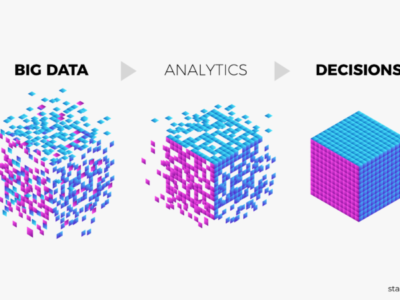Within the next major trend in data processing, metadata is rapidly becoming critical for the success of big data initiatives in 2018 and beyond. The metadata contains all the information essential both to understand and to efficiently deploy data across companies – such as significance and purpose, lineage, use, etc. The efficient data management, regulatory compliance and an increasing stock of data management demands are critical in corporate data environments.
We discussed in previous articles how metadata can extract value and how organisations can use their metadata to optimise data initiatives. But, unless they are certain of significant returns on investment (ROI) it is unlikely that the high management will participate in metadata information management. This post explores how to build a business case for metadata and display value in order to demonstrate the much needed ROI.
Taking advantage of emerging metadata capabilities
Depending in a bottom line, firms have a profound problem. Corporate management can not do this: by growing operational performance, enhancing data quality and optimising the usefulness of their records, it is probable that investment into metadata increases their output. Below are four key features that stress the value of metadata and help to build the business case of metadata.
It may be a struggle to locate specific data sets in a vast data setting, but a comprehensive central metadata repository helps organisations to scan and uncover the appropriate data rapidly and efficiently. It is easier to find and confirm data valid for a particular use by defining and marking metadata sets. It increases organisational performance so that businesses like car towing companies can exploit their data more efficiently.
The quality of your data is critical to finding and understanding, but metadata can take this one step further. By using metadata, organisations can see how data are related to other data sets and the effects that changes can have on them. Of example, as a consumer asks for a business word like “customer identity number,” the user will be informed from an effect study what other data sets, cases and topic areas apply to that phrase. Moreover, if the data element needs to be deleted, moved and significantly changed, they can measure the effects for the organisation. If you change the phone-number data type from a string to a numeric one, for example, some space could be saved, but it could break 10 organisation-wide algorithms. Such report offers you a clear look into the nature and criticality of the details which can potentially increase operational performance and save time and resources.
Information breaches are nowadays nearly unavoidable, but metadata may help evaluate harm and enable organisations to react quickly and appropriately. To order to easily identify and accurately resolve the future effects of a violation, metadata may be used to define and evaluate data sets on the basis of their security threats. For example, the numbers of social security include sensitive information, but they are only a sequence of 9 digits without a related name. If a hacker only reaches social security numbers, he needs a different reaction than if they have access to complete social security customer records as well as related names and birth dates. A state-of-the-art data inventory before a hack or leak can prevent a firm from unnecessarily mistrusting and causing brand damage – and ultimately the ultimate effect.
For large data projects, every organisation needs high quality data, so the efficient and comprehensive certification process is essential. If a company sells data to a third party and wants maximum reimbursement, the quality and trustworthiness of the measurement will have to be guaranteed. Metadata could be used to develop measurements of data quality, so that data quality can be verified quantitatively. Organisations should not only achieve optimal data gains, but also be secure in the accuracy of the data that they currently use.
A sound strategy for metadata management can provide dividends, but organisations must implement a powerful, robust data management platform to leverage metadata effectively.
Managing Data Effectively
Organisations require a full data-government platform to obtain metadata to provide a comprehensive view of the data landscape of an organisation. The platform must include interactive information visualisation and lineage capabilities and transparent information on all aspects of the data assets of an organisation. They also should be immediately detected, allowing metadata updates to be identified and tracked. Upon discovery of changes, technical metadata relations can be examined in order to provide meaningful insights into data for better business choices.
Enterprises require integrated data governance to make better business choices, including metadata governance: metadata governance includes understanding the functions of metadata, as well as the incorporation of metadata into their organisational and relevant data processing practises.
Although companies recognise the value of Metadata, around 50% of organisations have no Metadata standards, which is a critical component of metadata governance. Official roles such as the Executive Sponsor and Champion help stakeholders to understand the importance of standards and the management of metadata. The capacity for monitoring and display of metadata content will demonstrate intensity and progress expected in metadata management by means of completeness, consistency, currency, time, clear management, reliability, transparency, privacy and usability.
The easily managed metadata offers an overview into the data flow, the opportunity to execute a enforcement effect review and eventually an audit trail to maintain consistency in a firm’s records. Effective metadata maintenance is essential to comprehensive data management, common practice when it is employed for search engine optimisation services.
This is not useful to build or suggest additional metadata. Good metadata management does. Properly maintained metadata, whether from an older card catalogue or an application, allows resource definitions simpler and lets you associate meanings with vocabulary.
Effective metadata policy allows for business information consistency metadata. Never right away, necessarily, but cumulatively. Over time , continuous metadata will yield more and more returns while the absence of such metadata will progressively exacerbate recovery problems and increase organisational stress efficiency.

